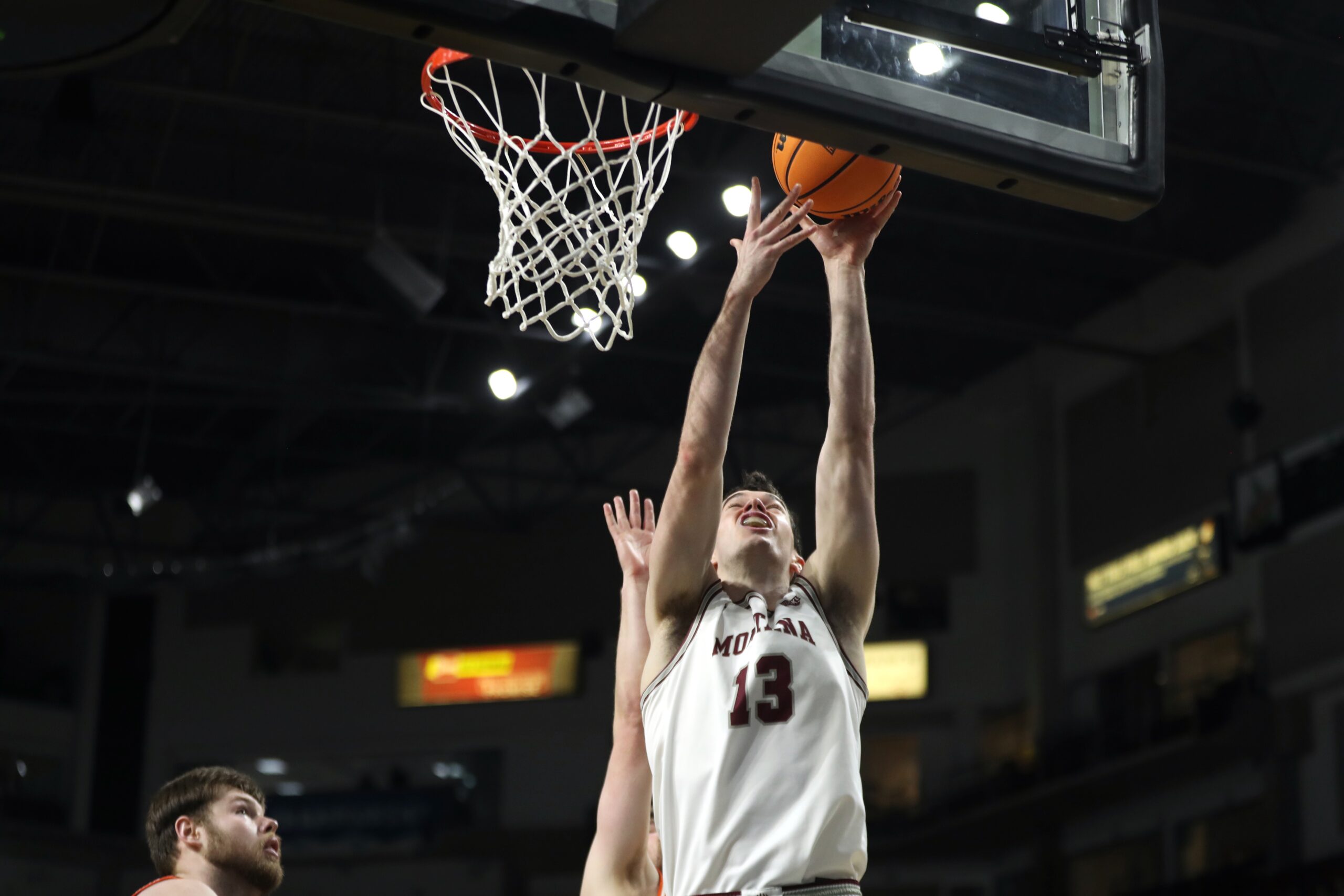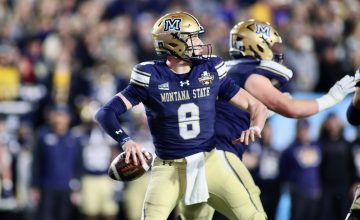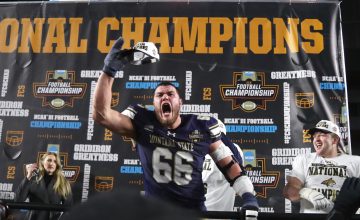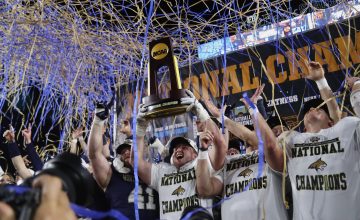Editor’s Note: This profile ran on March 7, 2023. Last month, Bannan, who’s been playing for the Brisbane Bullets, declared he was entering the upcoming NBA Draft.
Two days after Montana’s 68-56 loss to Weber State in the quarterfinals of last year’s Big Sky Conference tournament, Josh Bannan stepped back on the court at Dahlberg Arena.
It had been a successful sophomore season for Bannan – he boosted his averages from 8.6 points and 5.1 rebounds per game to 15.1 and 8.2 and earned an all-Big Sky second-team selection – with a sour ending.
Going against Weber State star Dillon Jones, he shot 1 of 8 in the quarterfinal game and committed five turnovers as the Griz went one-and-done in Boise.
“It was one of the hardest days in my life,” Bannan said. “I felt like I completely under-performed in that moment, and I took a lot of responsibility for the way that game went. I was very disappointed in the way I played and disappointed in how the season ended.”
He’d spent the day after the Weber State game processing the pain and watching film with Montana’s coaching staff, diagnosing weaknesses.
Now he was ready to start correcting them.
“I couldn’t stay out of the gym because there was just this feeling of emptiness in me,” Bannan said. “I didn’t feel like I could just solve that by taking time off. I had to get back in the gym and there was just a craving to get back after it. … Given the way that it finished, I knew the only thing that could somewhat put my mind at ease was getting back in the gym.”
“To have the maturity and self drive to be able to basically take one day off after the season ended, sit down for hours and watch all your clips, look in-depth at all your statistical data, acknowledge the areas of your game that need improvement and growth, develop a plan for how you’re going to improve in those areas and then dedicate three to four hours in the gym, six days a week, for an entire offseason,” Montana assistant Anderson Clarke said, “that’s a perfect example of his work ethic and dedication to growing his game.”
***

Now a junior, Bannan’s year-round work over the three years he’s been at Montana hasn’t just grown his game – it’s completely transformed it, turning him into one of most unique players in the league and the focal point of a re-made Griz roster.
Once a rugged rebounder and low-post banger, he’s evolved over the last two offseasons, methodically targeting the weak spots in his game and molding himself into a devastatingly versatile new-age power forward who’s capable of bringing the ball up the floor, stepping out to hit 3-pointers or orchestrating the offense from the high post.
The focus of his offseason work is clearly evident in his stats, the residue of summer workouts as distinct a visual signature in his statline as his corkscrewing, low-slung lefty jumper, released a beat after the apex of his jump, is on the court.
After making just 8 of his 34 3-point attempts as a freshman, he spent the summer working on his shot and raised his 3-point percentage by over 10 points as a sophomore.
“I would estimate that from when he came in as a freshman to right now, he’s made somewhere between 500,000 and 600,000 shots,” Clarke said. “That was a huge emphasis.”
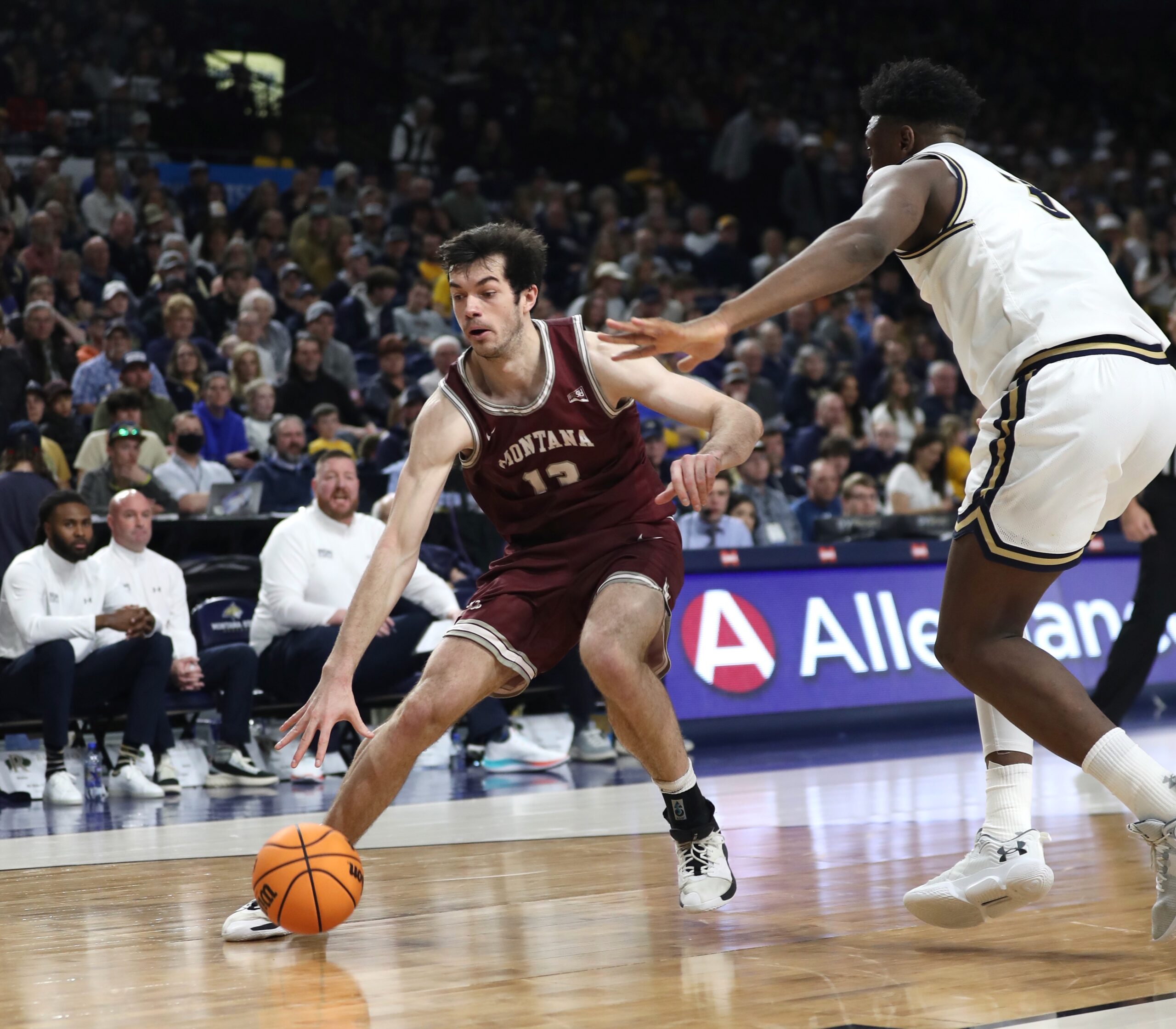
Last summer, Bannan and Clarke, along with the rest of the Griz staff, looked at the player he’d become and saw a well-rounded scorer, capable of getting buckets from anywhere on the court – but one who created shots mostly for himself, and who didn’t have any counters to teams focusing most of their defensive attention on him.
“We kind of got the shooting to a point where it was serviceable and he was shooting a good percentage and he was confident in it,” Clarke said. “And I think the passing and the ballhandling and the playmaking was the thing that we tried to add from that sophomore to junior year. … It’s not just, how do I get my own shot? It’s how can I get teammates involved and get them going?”
After averaging 1.6 assists per game a year ago, he jumped to 3.6 this year, fifth in the conference, with an assist to turnover ratio solidly above 1.
According to advanced stats from kenpom.com, he nearly doubled his assist rate – the percentage of his team’s baskets a player assists while on the court – from 12.8% a year ago to 23.2%, and his assist rate of 25.7% in conference games was fourth in the league.
Along with Jones, he was one of two players to finish in the top 11 in the conference in scoring, rebounding and assists, averaging 15.1 points, 8.5 rebounds and 3.6 assists per game on the way to first-team all-conference honors.
“He can stretch you out, he can shoot the 3, but he can also post you up and he can drive on you,” Montana State head coach Danny Sprinkle said. “You have to be aware of him always.”
Against Sprinkle’s Bobcats on February 18, Bannan continually faced up against MSU’s star big Jubrile Belo, beating him to the rim and slapping the glass for layup after layup en route to 25 points.

With smaller defenders on him, he’s a masher with fine footwork and a mean streak, getting to the rim to finish with jump hooks over either shoulder or spinning away to get sneaky twisting reverse layups along the baseline.
He’s hitting 41.3% of his 3-pointers this year, and 77% from the free-throw line.
On Montana’s first four possessions against North Dakota State on December 10, he posted up for a short jump hook, faced up and drove from the 3-point line for a bucket, set a screen that freed Brandon Whitney for a layup, and battled to tap out an offensive rebound that led to another layup by Aanen Moody. A couple possessions later he hit a 3, all in the first five minutes of the game.
“When you couple the talent that he possesses with the size, the versatility, you know, there’s really nothing he can’t do on a basketball court,” Montana associate head coach Chris Cobb said. “He can guard five positions. He can handle the ball and make decisions. He can shoot it. He can score around the rim.”
Every part of that improvement has been crucial for a Montana team that’s rebounded from a 3-6 conference start to win eight out of nine, including Monday’s Big Sky quarterfinal victory over Idaho State.
Although the Griz did a good job integrating new transfers like Dischon Thomas and Aanen Moody to take some of the pressure off his scoring, Bannan has carried the bulk of the responsibility for Montana’s rebounding and playmaking. He’s been the biggest factor keeping the Griz, who like to play three short guards with some combo of Moody, Brandon Whitney, Lonnell Martin Jr. and Josh Vazquez, from being overwhelmed on the boards (Montana has an almost perfectly neutral rebounding margin this year).
On offense, he’s increasingly taken the ball out of Whitney’s hands to serve as the fulcrum of the Griz attack, dribbling into inverted pick and rolls as a 6-foot-9 point guard and cooking up a nice two-man game with Moody, who zooms to the top of the key to take a handoff and can either rise and fire, pitch the ball back to Bannan fading behind the 3-point line or pivot into a more traditional pick and roll with Bannan as the screener.
“His ability to facilitate is huge and the versatility, I think it takes pressure off of Brandon Whitney and allows him to score more,” head coach Travis DeCuire said. “It frees (Whitney) up to move without the ball and be effective in more areas than just handling the rock, and Bannan then also gets to focus on the spots he can score in.”
His 8.5 rebounds per game and 108 total assists were each nearly double the next-closest player on the Griz (Dischon Thomas averaged 4.5 rebounds and Brandon Whitney had 66 assists).
“It’s always been that good things happen when the ball is in his hands, but he’s just more consistent with it now,” Eastern Washington head coach David Riley said. “It’s like every time he gets the ball in scoring position, something good happens for their team. He’s not just left-handed anymore, he can shoot a lot more consistently now. He’s just a heck of a player. And so it shows that he’s working really hard, but also their coaching staff’s process with development is pretty good.”
***
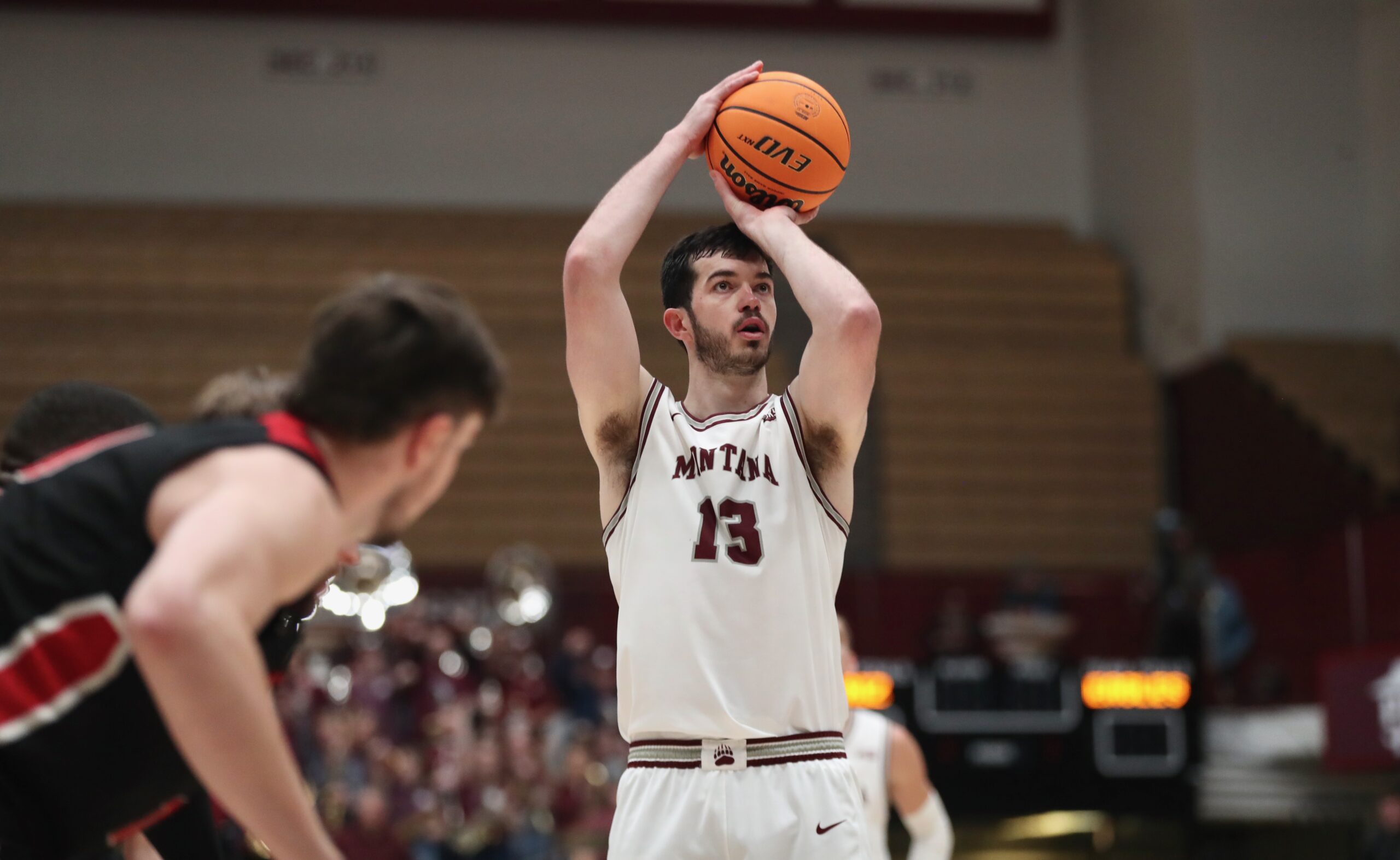
As Bannan and Clarke worked out one morning this season, Dahlberg Arena was so quiet that the few onlookers passing through could hear not only the squeak of Bannan’s sneakers and the crisp, fall-leaf sound of the ball slicing through the net, but also every one of his Serena Williams grunts as he worked through a drop-step drill and the slap of the ball against his hands as he gathered.
The duo worked quickly, efficiently, with brief moments of conference as Bannan pointed out what he wanted to work on next – midrange jumpers off the curl and off the dribble, 3-pointers from all around the arc, spins and counter-spins with either hand in the post.
Clarke, from Tasmania, and Bannan, from Melbourne, have been connected for years through Clarke’s father Marty, one of the most respected figures in Australian basketball who runs the NBA Global Academy at the Australian Institute of Sport.
Australia has a proud and fierce basketball tradition, one that’s represented by the national team, the Boomers (named, Wikipedia mentions, after a slang term for a male kangaroo. This is not relevant, but it is delightful – New Zealand’s national team is nicknamed the Tall Blacks, playing off the country’s famous All Blacks rugby team).
“Playing for Australia has always been my No. 1 goal out of basketball, representing Australia in the Olympic Games,” Bannan said, relegating every American boy’s basketball dream to second on his list. “And then I know, second to that, has been playing in the NBA.”
There are counter-examples (*cough* Ben Simmons), but the quintessential Australian basketball player is an underdog, someone who’s maxed out their limited physical gifts with pure effort – Patty Mills, Matthew Dellavedova or Joe Ingles, all of whom Bannan name-checked (Ingles, actually, is as perfect a comp for Bannan as there is – same receding hairline and unathletic first impression, same unorthodox but effective lefty jump shot, same innate feel for the game that makes all of his other attributes play up).
Mills, in particular, has reached national hero status thanks more to his play for the national team than for his long NBA career as a backup point guard for the Spurs and Nets. Mills, a second-round pick, played at the Idaho Central Arena, home of the Big Sky tournament, with the D-League Idaho Stampede as he tried to catch on with the Trail Blazers, and also played in Australia and China before making the Spurs. After carrying the Australian flag at the opening ceremonies of the 2020 Tokyo Olympics, he scored 42 points in the bronze medal game against Luka Doncic’s Slovenia to carry the Boomers to their first-ever medal in international competition, an achievement that cemented him as a national icon on par with Michael Phelps in the U.S. or Mo Farah in Britain.
“I think his work ethic, just from an outsider’s perspective, from what I can see, is incredible,” Bannan said. “The way he plays when he plays for Australia is pretty special. To me, that’s sort of the pinnacle of basketball. And then he’s a really good person off the court too. The way he is, I aspire to be somewhat like that.”
Bannan spent long hours in the gym with his father, Chris – “my dad instilled in me at a young age, if you want something, you have to work at it constantly,” Bannan said – but was a late bloomer and didn’t make his first state team until he was 16 or 17. Shortly after that, he made the national team at his age group and was invited to take a spot at the AIS, which marked him as one of the top players in the country.
The Griz, trying to make inroads into the Australian basketball landscape after hiring Clarke and sending Cobb on a trip down under to scout Bannan and Clarke’s brother Hunter, were the first school to recruit him.
Missoula is over 8,000 miles away from Melbourne, and as Bannan struggled to adjust at first, he found comfort in his workouts, the continuation of a routine that had defined much of his life, from the early years with his dad to his time at AIS, where he squeezed solo time in the gym around mandatory workouts and practices.
“Outside of that team training, it was up to you,” Bannan said. “And I always wanted to outwork everyone else who was there. I try everywhere I go to be the hardest-working guy, because how can I expect to achieve the things I want to achieve if I’m not working harder than everyone else?”
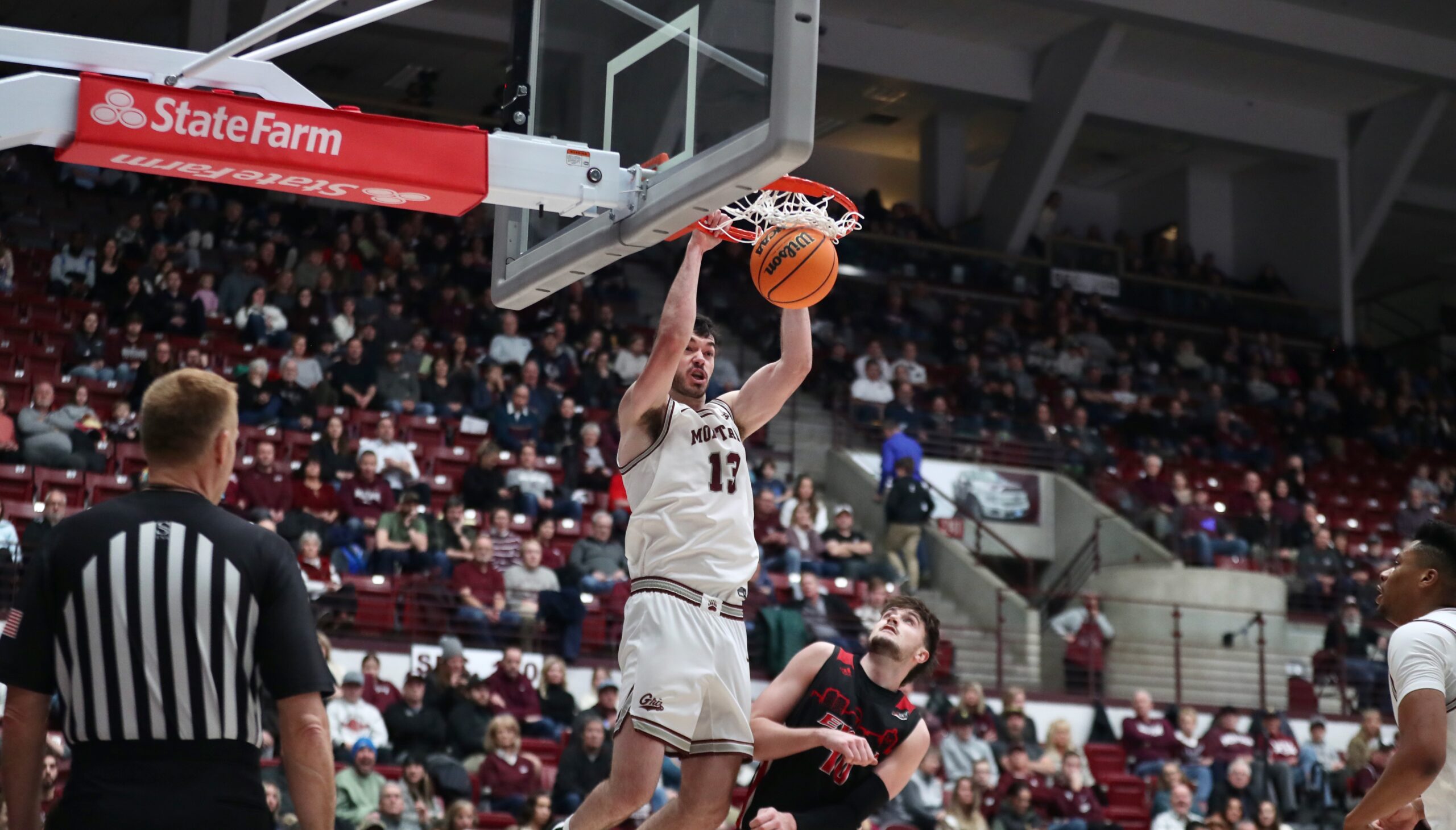
During summers at Montana, Bannan hit the gym at 6 a.m. to work out with Clarke before youth summer camps started at 7. After a full day of coaching kids, he would come back to the court at night to shoot while his girlfriend rebounded for him.
“Shoutout to Hannah,” Clarke said.
When that wasn’t enough, he called his family back in Australia.
“My freshman year was the year off with the COVID year, so it was hard, it was really hard,” Bannan said. “But my mum and dad were just there for me through it all. I’d call and just really be struggling and they’re talking you through it and calming me down.”
Bannan’s mom and dad visited the States for the first time last summer, before his junior year. In January, his mom and sister came back – the first time anyone in his family had ever seen him play for the Griz in person.
In the first game they attended, he scored his 1,000th career point and finished with 12 points, seven rebounds and six assists, but missed a crucial and-1 free throw with 1:12 left before Weber State’s insane steal and 3-pointer at the buzzer let the Wildcats snatch a 59-57 win.
After the game, they waited for a dejected Bannan, as did a small group of media. But as he emerged from the locker room, before doing anything else, he went to the free-throw line at the east end of Dahlberg Arena, grabbed a ball, and shot.
“I find there aren’t many things that I find more enjoyment in than a really hard workout, where you get to the end and there’s just a sense of accomplishment,” Bannan said. “I love working out during the offseason, I love just getting in the gym with Ando (Clarke) and working out, just, like, sweating through my t-shirt. I enjoy that feeling. And I love seeing the progress, I love feeling like I’m improving, and then seeing the benefits when I get to play.”

